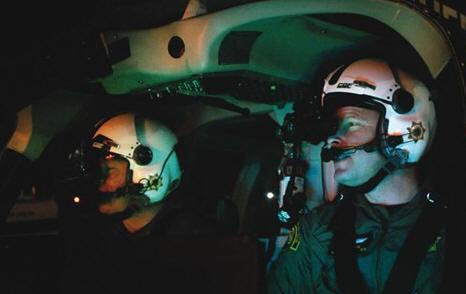
NEWSROOM
 |
NEWSROOM |
|
|
|
|
||||
|
By Mike Mitchell |
|||||
 |
December 15, 2009 - Vanderbilt LifeFlight pilots are
now using the latest night vision technology once reserved for military
operations. ITT Night
Vision F4949 provides the flight crew superior, image intensifier
technology. With the ability to enhance light 10,000 times, the air
ambulance service's new night vision essentially turns night into day. “You can see a lit cigarette 10 miles away,” said
Wilson Matthews, R.N., E.M.T., chief flight nurse for LifeFlight's base
in “You go from seeing nothing to seeing the texture of
tree leaves”. Matthews said
night vision will be most useful when making scene landings because
pilots and nurses will be able to see the trees, power lines, rising
terrain and other hazards on the ground. |
||||
|
“Night vision is absolutely amazing. I have been at
LifeFlight since 1997, and this is the single best thing we have done to
enhance safety.” Night vision works by gathering ambient light from the
moon, stars or distant light sources into a special tube. The tube
enhances the energy level of the light and hurls the particles at a
phosphorus screen that creates the amplified image seen through the
eyepiece. |
|||||
|
Matthews cautioned that night vision will not allow
LifeFlight to make flights that were deemed too risky in the past, but
it will greatly enhance the safety of their current capabilities. Vanderbilt LifeFlight is a part of In December 13, 2006,
Vanderbilt LifeFlight’s Office of Emergency Communications
designated as the |
| ©AvStop Online Magazine Contact Us Return To News |
|